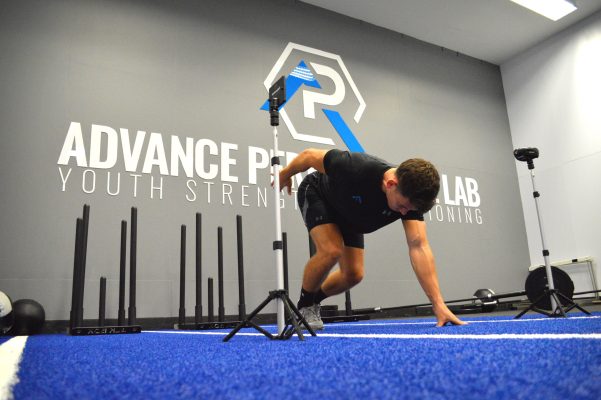As we currently don’t have access to gyms or training facilities, there have been many questions asked around what should athletes be doing to ensure they stay at pre lockdown levels?
One option, which doesn’t require a gym, is to practice sprints. Ever heard the old adage “speed kills”? If you have ever played full back against a rapid winger, then you’ll know what I’m talking about! Speed is probably the most important physical attribute an athlete can possess; you just have to look at those athletes that are first picks in the NFL draft to see its importance.
Whilst the simple answer is yes, athletes probably should utilise this time effectively and expose themselves to fast running, there are however, a few caveats to that which I shall come on to later.
First for the bad news though folks as, unless like me you are fortunate enough to run a gym or you’ve got one at home, you are not currently in a position to improve, or even maintain your strength levels (see our return to sport blog for more info on this). The below flow diagram is a simple block training series, which will aid in developing physical capacities and skills for overall athletic development. Unfortunately, as we can’t get into the gyms as the moment, we are forced to maintain skills, and thus missing the development of greater physical capacities. Now for the good news. By maintaining and working on our skill level, once we reopen the Lab, we can start back developing physical capacities, such as relative strength, and you may even see your strength levels increase quite quickly and moving towards a new strength PB.
Progressive training blocks

Performing a Sprint Session
The answer is fairly straightforward, and no it doesn’t include fancy drills, ladders, hurdles or any other equipment that some charlatan/quack/hoodwinker is trying to sell you. You simply have to run as fast as you can (following an intelligent warm up) and fairly regularly (see below). Now I know this may not be what you want to hear as unfortunately there is no magical pill, or special speed workout that will make you fast. In fact, right now, with strength levels declining, you will not be able to improve your speed, your simple aim is to slow down the regression so that when you can get back to the Lab (other gyms are available) then you won’t have fallen so far.
As everyone is individual with different training ages, strength levels and exposure to sprinting, we are hesitant to prescribe speed training programmes. Instead we are going to outline some points that are vital to adhere to in order to get more from your sprint session. Remember, as always, consistency is king!
Points to remember for an effective sprint session:
1. Regular frequency, ideally twice per week with at least 48 hours rest between sprint sessions.
2. Maximal effort, top end of the RPE scale.
3. Rest periods of around 1:20 sprint time to rest ratio.
4. Aim for 100-200 meters worth of sprinting per session.
5. Timing your sprints is key, aim to be consistent with each bout. Once you have a 10% drop off in speed then end the session; You don’t want to sprint when fatigued, it is skill training not conditioning.
Example of sprint skill session

Benefits of regular sprinting:
1. Become a more skillful sprinter (balance and coordination)
2. Expose body to high velocities.
3. Ability to coordinate ground reaction forces up to 3 x BW per leg in elite sprinters*
4. Muscular and passive tissue changes and adaptations
5. Practice to produce force as quickly as possible (lots of adaptations on the nervous system)
Links to decrease injury risk, however the evidence is inconclusive as injury is multifactorial.
In summary, speed is a key component in most sports, with an athlete’s ability to get from a to b faster than his/her opponent, often critical to the outcome. Our speed is dictated by physics, in order to accelerate our bodies (mass) we need to produce force, the greater the force, the greater the acceleration. Whilst there is a very strong correlation between maximum strength and acceleration, being strong is just one piece of the puzzle. We also have to factor in the rate at which we produce force (RFD) and also the elastic quality of our tissues. Thus, whilst we are not able to get strong or maintain the strength we had 8 weeks ago, we therefore, are using sprinting not to get faster, but to claw onto and try to keep hold of, the speed we had. In simple terms we are sprinting to practice the skill of sprinting.
The guidelines we have recommended are there to act as advice, there is no hard and fast rule as we are all individuals. If you are unsure of anything we have said or require something more individual, then please get in touch. And remember, sprinting twice a week will not make you an athlete, it is the life you lead each day that dictates this therefore train consistently, drink water, sleep well, eat quality food and be kind.
* 3 x bodyweight on one leg!! And people worry about kids lifting 10kg weights??? I feel another blog post coming on…… 😉



